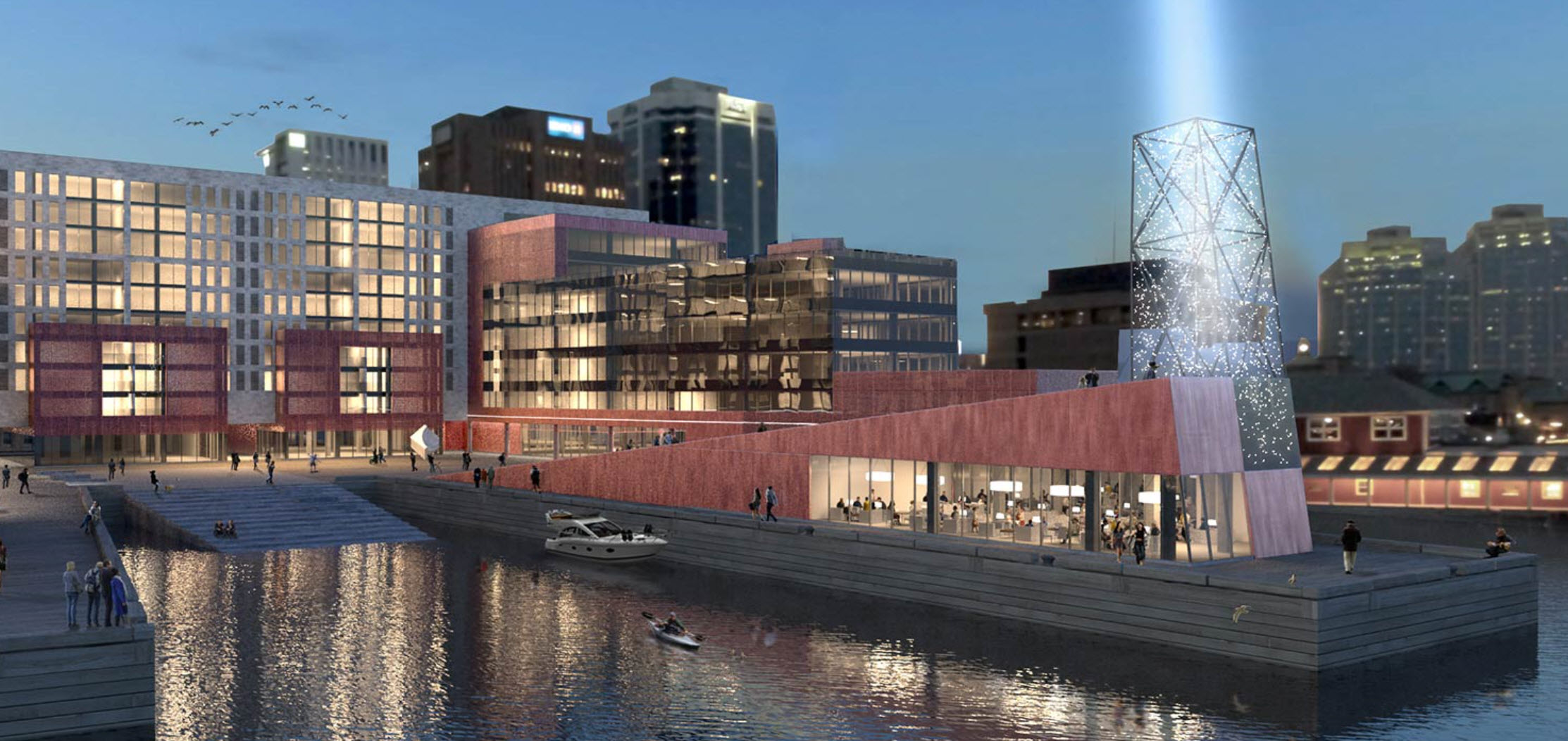
Workplace Design as a Talent Management Strategy
Above, the Queen’s Marque Project, Halifax, Nova Scotia ~ development and photo credit: Armour Group
Talent management executives agree that the key challenges facing them these days are the acquisition and retention of top talent. Recent studies show that workplace design has a major effect on employee productivity and satisfaction and can be an effective component of your talent management strategy.
“Buildings can improve overall productivity and performance by as much as 12.5 percent or reduce them by as much as 17 percent. That’s a 30 percent swing between employee performance in the best and worst buildings.” ~ Carnegie Mellon CBPD Building Investment Decision Support study of High Performance Buildings
What constitutes a well-designed workplace?
- A productive workplace facilitates employee engagement and encourages collaboration.
- Companies like Shopify, Google and Apple are providing flexible space for those who might be dropping in from other offices or departments, or for those who work primarily from a home office.
- Lighting, colour and acoustics matter, so much so that they have been linked to health and wellness issues. For example, better workplace lighting has been linked to a 15% reduction in office absenteeism.
- Bike racks, juice bars, downtime spaces, and flexibility in work stations are no longer just for high-tech operations hoping to attract millennials; these elements are becoming the norm in newly designed buildings, and in retrofits of warehouses and repurposed industrial settings.
- Access to fresh air, outside amenities, and a choice of experience provides rest and stimulation that increase productivity and satisfaction.
Employee Engagement
“In a survey across 142 countries, only 13 percent of employees reported feeling engaged in their jobs.
Disengaged workers — those who are negative or even hostile to their organizations — outnumber engaged employees by nearly two to one. Companies with disengaged employees experience 30 to 50 percent more turnover.
”Financial losses due to absenteeism and “presenteeism” (a loss of workplace productivity from employee health problems or personal issues) account for 4 percent of operating costs.”
~ source HOK.com Thought Leadership
The measurable benefits of workplace design
Benchmarking studies by research company Prosci have found that workplace projects with an effective change management component are six times more likely to meet their objectives and succeed. Prosci, ‘Change Management: The People Side of Change’
“Sixty percent of employees with high access to workplace flexibility are very satisfied with their jobs, compared with 44 percent of those with moderate access and only 22 percent of those with low access. ~ Ellen Galinsky, National Study of the Changing Workforce
Three Canadian Examples of Effective Workplace Design
The Queen’s Marque project in Halifax, Nova Scotia is situated on two hectares of waterfront and is scheduled for completion in 2020. It is a strategically designed development of office space, shops, restaurants, a boutique hotel, and 75,000 square feet of public space with a central plaza. The office environments will focus on the employee, with plenty of natural light, fresh air, bike racks and shower facilities.
The Lonsdale Quay development is adjacent to the Insurance Corporation of BC headquarters, and features ferry service from downtown Vancouver to the Quay in North Vancouver. Year round, office workers mingle on the docks and in the shops during their breaks.
The Granville Island Development in Vancouver is the most successful integration of workplaces, restaurants, hotel and public market in Canada, so much so that it has become a must-visit for any tourist or newcomer to Vancouver.
Both the Lonsdale Quay and the Granville Island locations were several years in the making, and continue to be vibrant, attractive meeting places and workplaces. The Queen’s Marque project holds similar promise.

